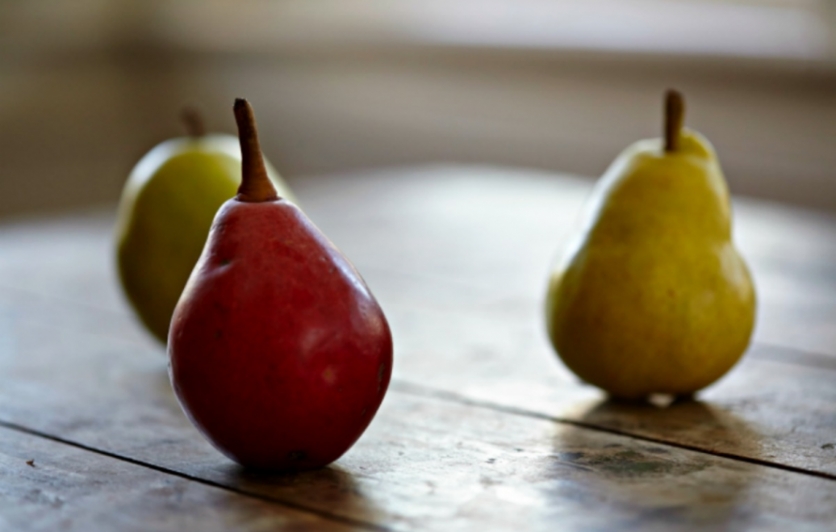
Pear recipes should be all the rage. But the tree fruit is notoriously underutilized in sweet and savory dishes, despite its abundance and versatility and its peak seasonality—right now. These recipes, from the Henry Street Tap Room and Cider Belly Doughnuts, will tempt you to reconsider the versatility of the pear.
Pears come in two main varieties: Asian and European.
Asian pears are shaped like apples and have gritty, hard peels that give way to crisp, sometimes downright crunchy interiors, with an airy texture and sweetness that stand up well to aggressive flavors. These pears (also known as nashi, Japanese, Korean, sand and apple pears) are ideal hand fruit and pair beautifully with assertive cheeses, balance sriracha-spiked spicy slaws with a touch of sweet or serve as the crowning jewel of kitchen-sink harvest salads. Heat advisory: The texture of Asian pears tends to break down and they fail to perform at their peak when cooked.
European pears, however, are culinary multitaskers. While flavor profiles and textures differ between types—the mellow, juicy, crisp green Anjou vs. the soft, floral, perfumed Starkrimson—they all share the same curvaceous form, dense texture and flexibility in the hand or the baking dish.
Pear recipes should be all the rage. But the tree fruit is notoriously underutilized in sweet and savory dishes, despite its abundance and versatility and its peak seasonality—right now. European pears have been cultivated in New York for centuries (the first pear trees in America are thought to have been planted in 1630 in Massachusetts), and it’s about time the fruit trends. We turned to chefs at two cutting-edge kitchens for their favorite boundary-pushing recipes that celebrate the delicate, sweet-savory aroma and flavor so unique to the grand, glorious pear.






